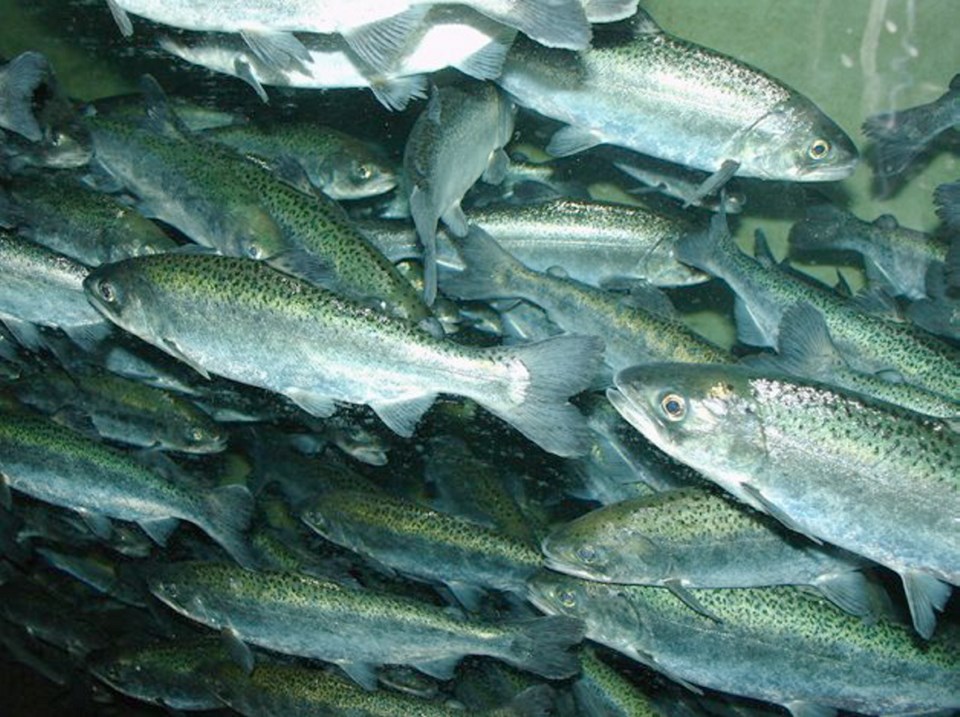The federal government is cutting back coast-wide on allowed catches of prized chinook salmon as it attempts to save the small population of endangered southern resident killer whales.
“I am amazed that they are taking that step. It has been long overdue,” Ken Balcomb, of the Center for Whale Research in Friday Harbor, Washington, said Thursday.
Kathy Scarfo, president of the West Coast Trollers Association, expressed concern for the future of her members, who catch only chinook. “It’s the only fishery we have. They have taken away everything else. So it is life and death to this fleet.”
Chinook salmon, also called spring salmon, are the largest Pacific salmon, with some known to tip the scales at more than 100 pounds (45 kilograms).
Their stocks have declined dramatically in recent years, Fisheries and Oceans Canada said Thursday. The new rules are intended to help boost chinook numbers.
Chinook are prized by recreational anglers and sports- fishing-related businesses.
But chinook are also prized by southern resident whales, which rely on the fish for 80 per cent of their diet.
This population of orcas has only 76 members and lack of prey is a critical factor affecting their survival, the federal government said. The orcas are a mainstay of Vancouver Island’s whale-watching industry.
Balcomb is hoping that Canada’s new measures will allow more chinook salmon to reach spawning beds, thus increasing numbers heading to the ocean in the future.
He estimates that the entire group of southern resident whales, which can range from California to Alaska, consume about 580,000 chinooks, weighing about 20 pounds each, per year.
Orcas prefer chinook because “it is the biggest and most nutritious fish,” Balcomb said.
Among the southern residents, only 26 are breeding females, he said. “Worse than that, only 14 of them have had babies in the last 10 years.
“Worse than that, only five of them have had babies in the last five years,” he said.
“They are just dwindling down to nothing in reproduction.”
Fisheries and Oceans Minister Dominic LeBlanc announced a reduction of 25 to 35 per cent in the total amount of chinook salmon permitted to be caught.
Recreational and commercial salmon fisheries will see closures in parts of Juan de Fuca Strait and in portions of waters around the Gulf Islands.
Partial closures at the mouth of the Fraser River will protect key foraging areas for the whales, the Fisheries Department said.
Reduced harvest limits, size limits, time restrictions, and specific area closures were also announced to protect wild chinook.
The federal government is spending $9.5 million to help restore chinook salmon habitat.
More efforts to support killer whales will be announced in the near future, the Fisheries Department said.
Scarfo said the troll fleet has worked with the Fisheries Department for years to support chinook stocks and has seen its catches reduced by 30 to 70 per cent through the last decade.
The government should have instead curtailed the recreational chinook fishery in the Gulf of Georgia and Juan de Fuca Strait a long time ago, she said.
“If they take any more fish from us, we are in serious trouble.”
This year, West Coast trollers, which fish off Vancouver Island’s west coast, are allocated only 15,000 individual chinook, compared with an anticipated recreational allotment of about 60,000 fish, she said.
In recent days only about 60 members of the 140-boat fleet have been on the water because there were not enough fish for everyone, she said.
Scarfo’s own boat is in dock for that reason. “We could not afford to pay a deckhand.”
One day on the water might see a troller pull in only nine fish, she said.
Members of the West Coast Trollers Association primarily fish for chinook heading to the U.S. to spawn, while other commercial fisheries target salmon heading into the Fraser and other rivers.



